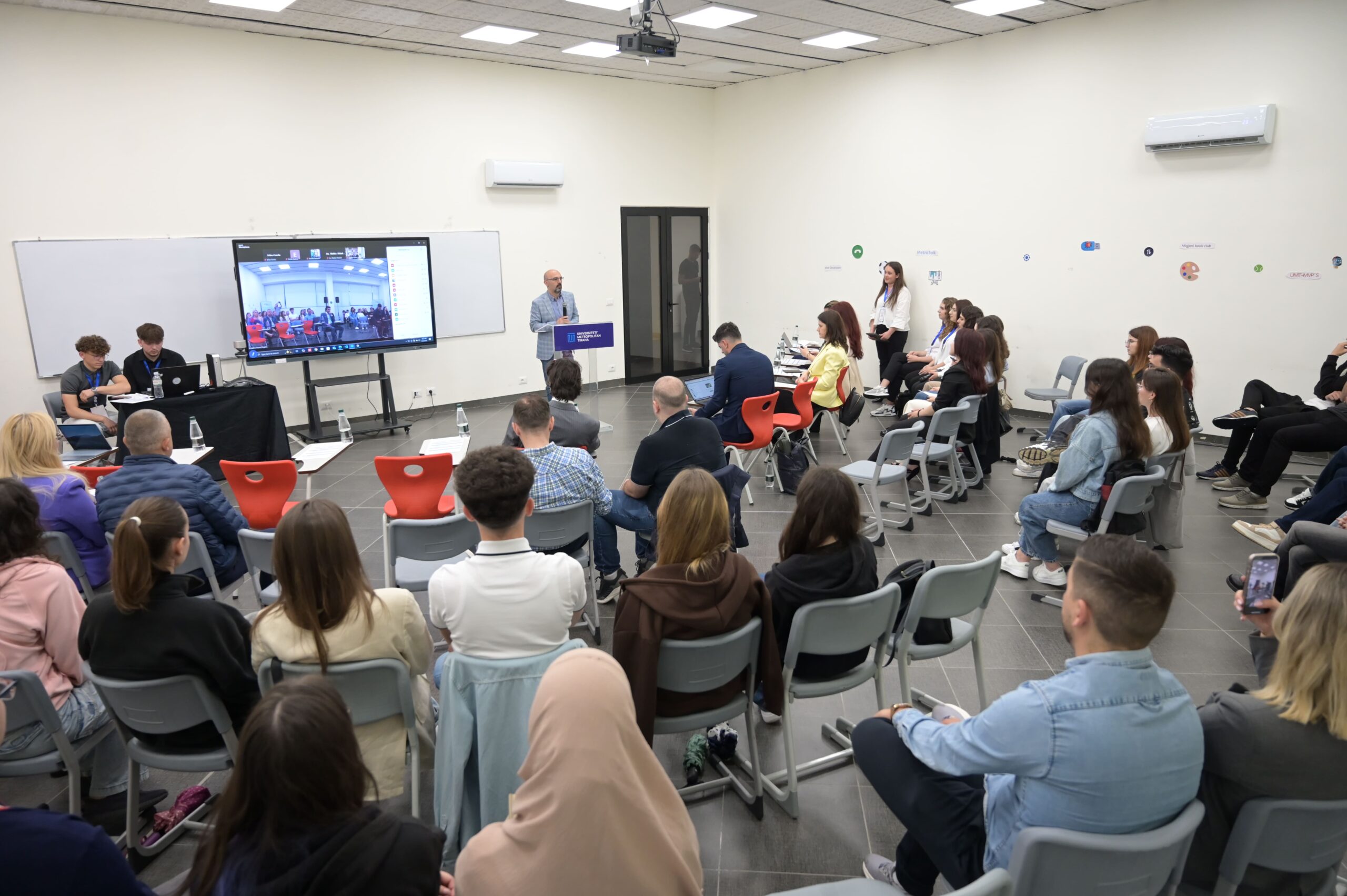Processing Medical Images using AI Algorithms
PhD candidate: Msc. Oriod Malo
PhD supervisor and co-supervisor – Albania: Prof. Dr. Nikolla Civici (UMT), Dr. Elton Domnori (UMT)
PhD supervisor and co-supervisor- Romania: Prof. Dr. Dan Selișteanu, Prof. Dr. Cosmin Ionete , Prof. Laurent Najman, ESIEE Paris- UGA
Context and general objectives
Machine learning has emerged as a transformative force in the realm of medicine, reshaping traditional approaches to diagnosis, treatment, and patient care. By harnessing the power of sophisticated algorithms and data analysis techniques, machine learning systems can sift through immense volumes of medical data with remarkable speed and precision. This data encompasses diverse sources, including electronic health records, genomic information, medical imaging scans, and real-time physiological data streams. [1]
Through pattern recognition and predictive modeling, machine learning algorithms can uncover subtle correlations and insights that might elude human observation. Consequently, these models enable healthcare professionals to develop personalized treatment plans tailored to individual patient needs, optimize drug therapies, and predict disease progression with unprecedented accuracy.[1]
Deep Learning, one particular subfield of Machine Learning which makes use of Neural Networks with many hidden layers, has gained prominence these last years due to it enabling machines to elaborate particularly advanced and complex types of data such as images, language and speech. [2]
The integration of artificial intelligence in modern medical imaging makes use principally of Convolutional Neural Networks, also called CNNs. [2][3] While the first Convolutional Neural Networks were relatively shallow in terms of node layers, more modern neural network architectures use deeper architectures such as stacking smaller kernels. This allows for a lower memory footprint which enables their deployment on small, mobile computing devices.[3]
Various researches predict that various machine learning and neural network techniques overlap and outperform humans in interpreting certain types of medical imaging such as radiology scans [4]. Controlled tests with radiology imaging have shown that a Neural Network based system could interpret radiology scans 150 times faster than a human. To be exact, a human took 177 seconds while a DNN only 1.2 seconds. [5]
At this moment, machine learning and neural network solutions have been found for many types of medical scans including bone films for fractures [6], classification for tuberculosis [7], computed topography (CT) scan for lung nodules large type [8], brain scans for hemorrage [9] and head trauma [10], magnetic resonance imaging (MRI) [11] etc.
Looking at the current state of art for CNN-based models for artificial intelligence networks and algorithms can be developed to aid medics in the diagnosis and treatment of various conditions. The focus might include the AI recognition of new types of medical scans such as multiple sclerosis MRI, improvement over current algorithms or the usage of new methods such as federated learning in AI-based mobile computing devices.
Scientific program / Methodology / Expected results
The evaluation of results in projects integrating machine learning and neural networks into medical practice is essential for several reasons. Firstly, assessing the performance of these algorithms against traditional methods allows for the validation of their efficacy in tasks such as diagnosis, prognosis, and treatment planning.
Metrics such as accuracy, sensitivity, specificity, and area under the curve (AUC) are commonly employed to quantify the performance of machine learning models in medical applications. Secondly, the evaluation provides insights into the reliability and generalizability of the developed models across diverse patient populations and healthcare settings.
Robust evaluation methodologies, including cross-validation and external validation on independent datasets, ensure the credibility and reproducibility of the results. Furthermore, the importance of such projects lies in their potential to revolutionize healthcare delivery by offering personalized and efficient solutions that enhance clinical decision-making, improve patient outcomes, and optimize resource allocation.
By leveraging the power of machine learning and neural networks, these projects pave the way for a future where healthcare is more precise, accessible, and effective, ultimately benefiting both patients and healthcare providers alike.
Phase 1: literature study, theoretical framework, and basic research material
- Activity 1A: Follow courses and specializations on Machine Learning, Deep Neural Networks and Medical Imaging for AI
- Activity 1B: Study and explore literature (articles books etc.) in order to outline a more detailed theoretical framework for the development of the thesis
- Activity 1C: Gather research materials and set up goal and steps for the second and third year
Phase 2: project/research submission
- Activity 2A Formulate hypothesis and make predictions based on previously examined literature
- Activity 2B Implement the proposed algorithm / model
- Activity 2C Interpretation of results from the practical implementation
Phase 3: Model refinement and doctoral thesis development
- Activity 3A Improve over the previously achieved results
- Activity 3B Final wrap-up and writing of thesis
Some references
[1] Rajkomar A, Dean J, Kohane I. Machine Learning in Medicine. N Engl J Med. 2019 Apr 4;380(14):1347-1358. doi: 10.1056/NEJMra1814259. PMID: 30943338.
[2] Esteva A, Robicquet A, Ramsundar B, Kuleshov V, DePristo M, Chou K, Cui C, Corrado G, Thrun S, Dean J. A guide to deep learning in healthcare. Nat Med. 2019 Jan;25(1):24-29. doi: 10.1038/s41591-018-0316-z. Epub 2019 Jan 7. PMID: 30617335.
[3] Litjens G, Kooi T, Bejnordi BE, Setio AAA, Ciompi F, Ghafoorian M, van der Laak JAWM, van Ginneken B, Sánchez CI. A survey on deep learning in medical image analysis. Med Image Anal. 2017 Dec;42:60-88. doi: 10.1016/j.media.2017.07.005. Epub 2017 Jul 26. PMID: 28778026.
[4] Obermeyer, Z., & Emanuel, E. J. (2016). Predicting the future—big data, machine learning, and clinical medicine. New England Journal of Medicine, 375(13), 1216-1219.
[5] Topol, E. J. (2019). High-performance medicine: the convergence of human and artificial intelligence. Nature medicine, 25(1), 44-56.
[6] Gale, William & Oakden-Rayner, Luke & Carneiro, Gustavo & Bradley, Andrew & Palmer, Lyle. (2017). Detecting hip fractures with radiologist-level performance using deep neural networks.
[7] Lakhani P, Sundaram B. Deep Learning at Chest Radiography: Automated Classification of Pulmonary Tuberculosis by Using Convolutional Neural Networks. Radiology. 2017 Aug;284(2):574-582. doi: 10.1148/radiol.2017162326. Epub 2017 Apr 24. PMID: 28436741.
[8] Bar, Amir & Wolf, Lior & Bregman-Amitai, Orna & Toledano, Eyal & Elnekave, Eldad. (2017). Compression Fractures Detection on CT.
[9] Arbabshirani MR, Fornwalt BK, Mongelluzzo GJ, Suever JD, Geise BD, Patel AA, Moore GJ. Advanced machine learning in action: identification of intracranial hemorrhage on computed tomography scans of the head with clinical workflow integration. NPJ Digit Med. 2018 Apr 4;1:9. doi: 10.1038/s41746-017-0015-z. PMID: 31304294; PMCID: PMC6550144.
[10] Chilamkurthy S, Ghosh R, Tanamala S, Biviji M, Campeau NG, Venugopal VK, Mahajan V, Rao P, Warier P. Deep learning algorithms for detection of critical findings in head CT scans: a retrospective study. Lancet. 2018 Dec 1;392(10162):2388-2396. doi: 10.1016/S0140-6736(18)31645-3. Epub 2018 Oct 11. PMID: 30318264.
[11] Lieman-Sifry, Jesse & Le, Matthieu & Lau, Felix & Sall, Sean & Golden, Daniel. (2017). FastVentricle: Cardiac Segmentation with ENet. 127-138. 10.1007/978-3-319-59448-4_13.
HYPERLINK https://umt.edu.al/kongresi-ecsr-2025/






